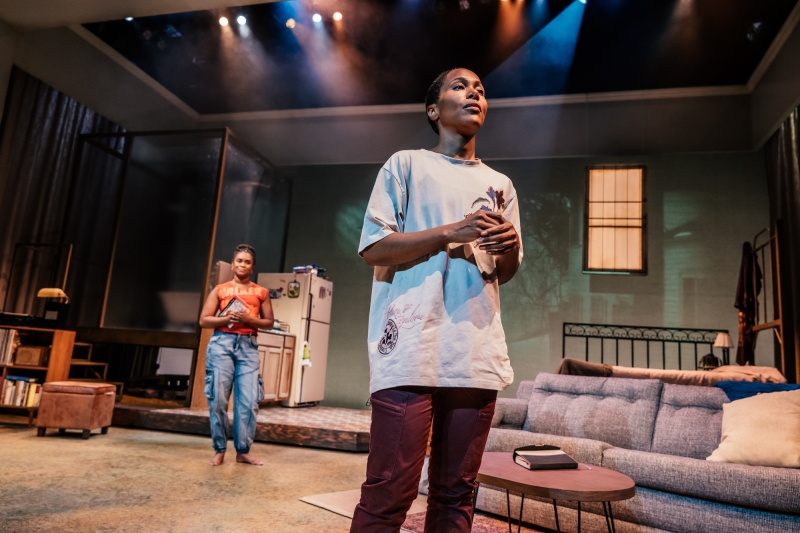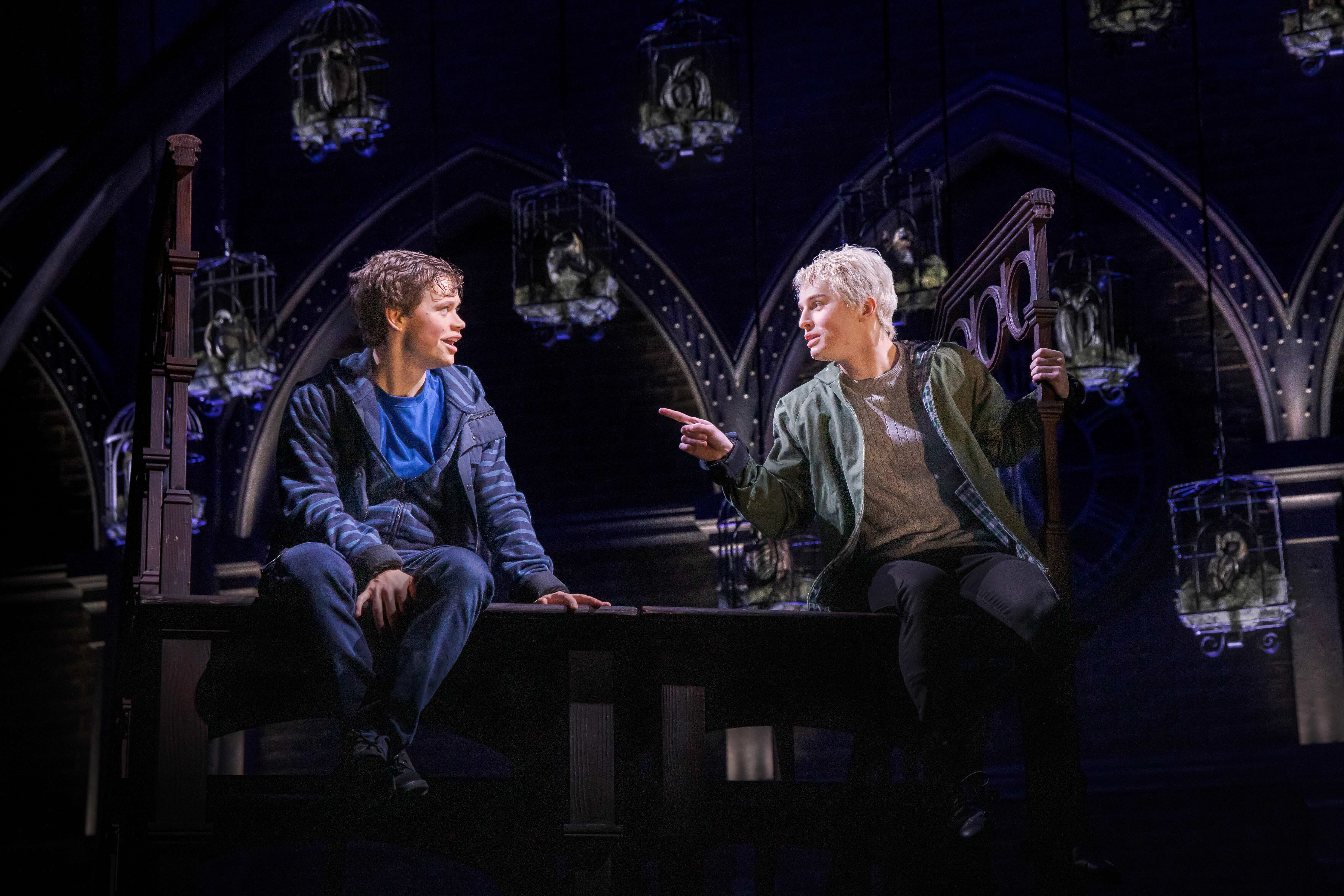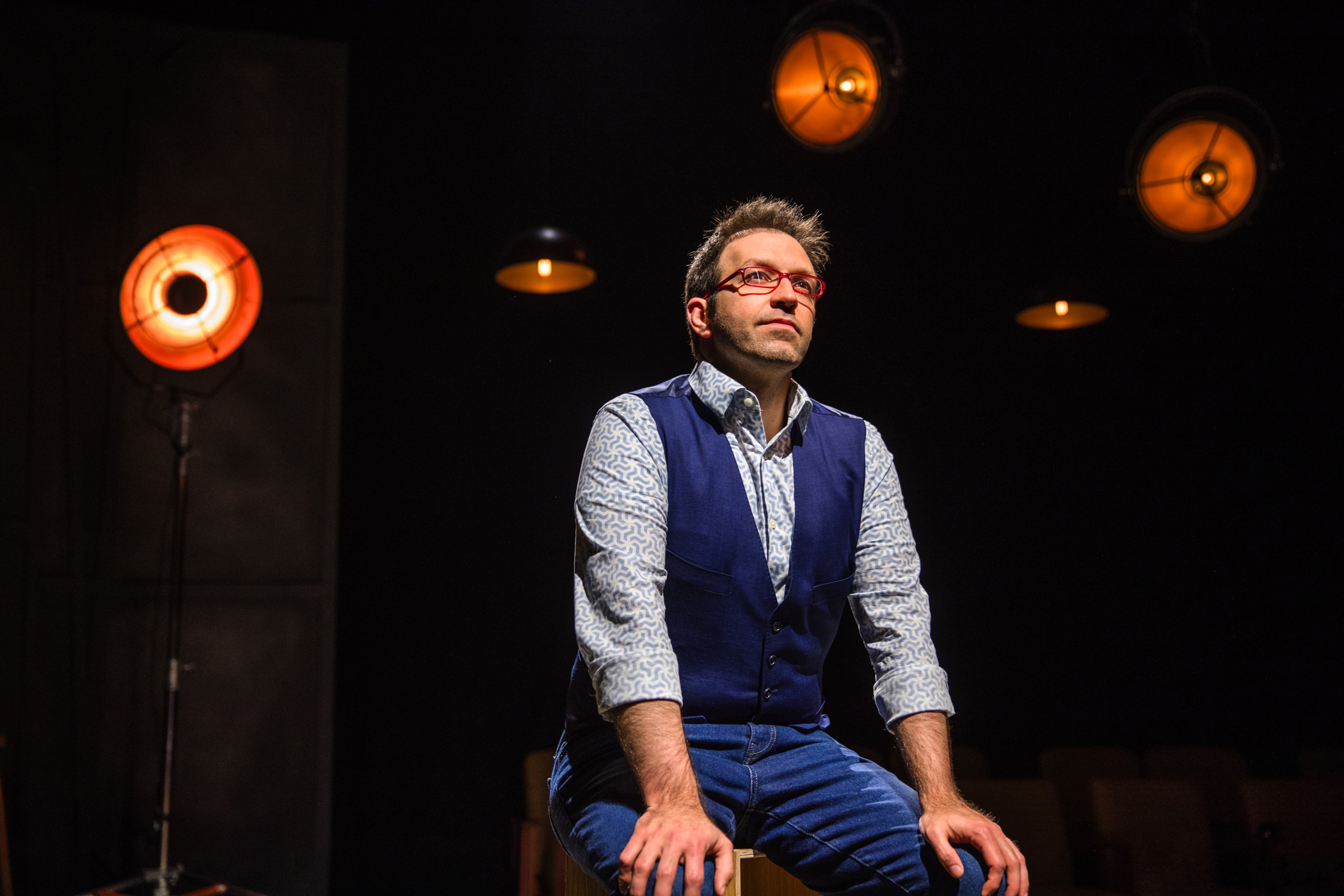Theater review: ‘Furlough’s Paradise’ embrace of intimacy through script, set design moves viewers

(From left to right) Pictured is Kacie Rogers and DeWanda Wise in “Furlough’s Paradise” at Geffen Playhouse. The show will run until May 18. (Courtesy of Jeff Lorch)
“Furlough’s Paradise”
April 16 - May 18
Gil Cates Theater
$45 - $139
By Warren Riley
April 26, 2025 2:01 p.m.
This post was updated May 1 at 9:06 p.m.
Warning: spoilers ahead.
“Furlough’s Paradise” reminds viewers – through the intimacy of the stage – to hold loved ones as tight as possible.
After its world premiere at Atlanta’s Alliance Theatre in 2024, “Furlough’s Paradise” has found its newest home at Geffen Playhouse’s Gil Cates Theater, where it will run until May 18. Playwright a.k. payne tells the story of two cousins, Mina and Sade, who spend three days together while the latter is on a furlough from her prison sentence. Their time together is marked by contemplative journeys into their past, meditations on their future and calls to take control of their present. The performance is enriched by director Tinashe Kajese-Bolden’s grounded interpretation of the text, as well as the dextrous grasp that actors Kacie Rogers and DeWanda Wise have on payne’s prose.
[Related: Theater review: ‘Back to the Future: The Musical’ makes the future of theater feel bleak]
Before the performance began, the voice of a.k. payne took over the theater’s loudspeaker with an offer for audience members to close their eyes. They instructed the audience to squeeze the hand of the person sitting closest, or if they brought a loved one, to hold them tight. All around the packed house, audience members giggled, hugged and smiled at the request of the playwright.
The two-person play opened with a projection on a moving screen where words such as “liberty” and “survive” appeared over intense electronic music. Projections appeared on the backdrop throughout the performance, occasionally enhancing the mood with dynamic visual interest, though sometimes veering into the overly literal. Some powerful uses of the digital display included the play’s opening image, which mirrored later moments representing Mina’s night terrors, and a hazy portrait of the cousins’ hometown – imagery which subtly underscored the dialogue.
However, there were a few moments where the choice of visual symbolism felt a tad heavy-handed. The play emphasizes the lack of time Mina and Sade have to spend together, so the repeated imagery of clocks left the audience to occasionally feel as though their hand was being held through the play’s messaging.
As Sade recounts her incarceration and Mina reflects on her Ivy League school days, the play unfolds with a text-heavy pulse. While the entire story takes place within the walls of an apartment, the audience never feels stuck. “Furlough’s Paradise” moves gracefully, both in moments of silence as well as in scenes of the cousins’ biting banter. The story is rich in exposition, requiring attentive listening in the first half to truly understand the stakes of the second. Luckily, the pasts of both characters are vividly encoded in the actors’ subtle and haunting performances.
The pair tackles the reality of the script’s situation with a strong sense of camaraderie, leaving room for pockets of keen comedic timing. Often, in scripts dealing with complex or controversial topics, moments of lightness can either be a breath of fresh air or a tonal atomic bomb, halting the momentum of the story. “Furlough’s Paradise” rejects either notion by fostering profound understanding between the two women. The audience stays along for the ride in the story’s highest highs and lowest lows. Each moment feels earned, whether it elicits laughs or tears.
Furthermore, payne’s storytelling often lives outside the easy boundaries of genre. The playwright provides a textual sense of liminality that echoes the interstice at the core of the story. This liminality is furthered when the play veers off into movement-based dreamscapes created by choreographer Dell Howlett. In these moments, the performing chops and chemistry of Wise and Rogers shined through brightly.
The acting duo has a magnetism that exists on another level besides rapport alone. The pair plays off each other magnificently, drawing in the audience with it grounded yet playful approach to the text. One can feel their connection as strongly in moments of physical contact as when they stand at opposite ends of the stage.
Moreover, the understated set allowed for the text’s liminality to exist in a state of in-between and for the moments of harsh reality to be supported by a grounded, realistic space. Scenic designer Chika Shimizu brought delicate precision to her composition of Sade and Mina’s apartment. Compartmentalizing the Gil Cates Stage, Shimizu provided plenty of room for fluid movement while bringing a lived-in charm to the residence. A standout aspect of the set design was the inclusion of a realistic, full-sized street lamp which lit the front of the stage, seemingly ripped straight off Westwood Boulevard.
In addition to the set, the use of texture throughout the performance provided vivid stage pictures, most notably as the play came to a heart-wrenching end. A key physical element which appeared toward the conclusion was a large, clean, white sheet. While a commonplace item out of context, incisive lighting design by Pablo Santiago turns the mundane object into a striking visual composition. As the final hours of Sade’s furlough approach, the cousins decide to build a fort to watch one of their favorite films – 2003’s “The Cheetah Girls.” The pair create the structure in one fluid motion, as a humongous tent appears to fall from the ceiling, eliciting a wave of gasps from the audience.
[Related: Theater review: While lacking good script, ‘Harry Potter and the Cursed Child’ spurs magic onstage]
The final moments of the story occur on the other side of the sheet, where a scene from the previously mentioned film is projected before the silhouettes of Sade and Mina dance to the film’s titular song. This moment of pure joy is ended at the sound of pounding on the door – it’s time for Sade to return to her prison sentence. As they emerged from the sheets, the cousins embraced tightly – just as the audience was invited to do at the start of the show. As the pair parted ways, the audience members rose to their feet in a unanimous standing ovation.
Radiant and striking, “Furlough’s Paradise” proves the unstoppable power of a.k. payne’s pen.




